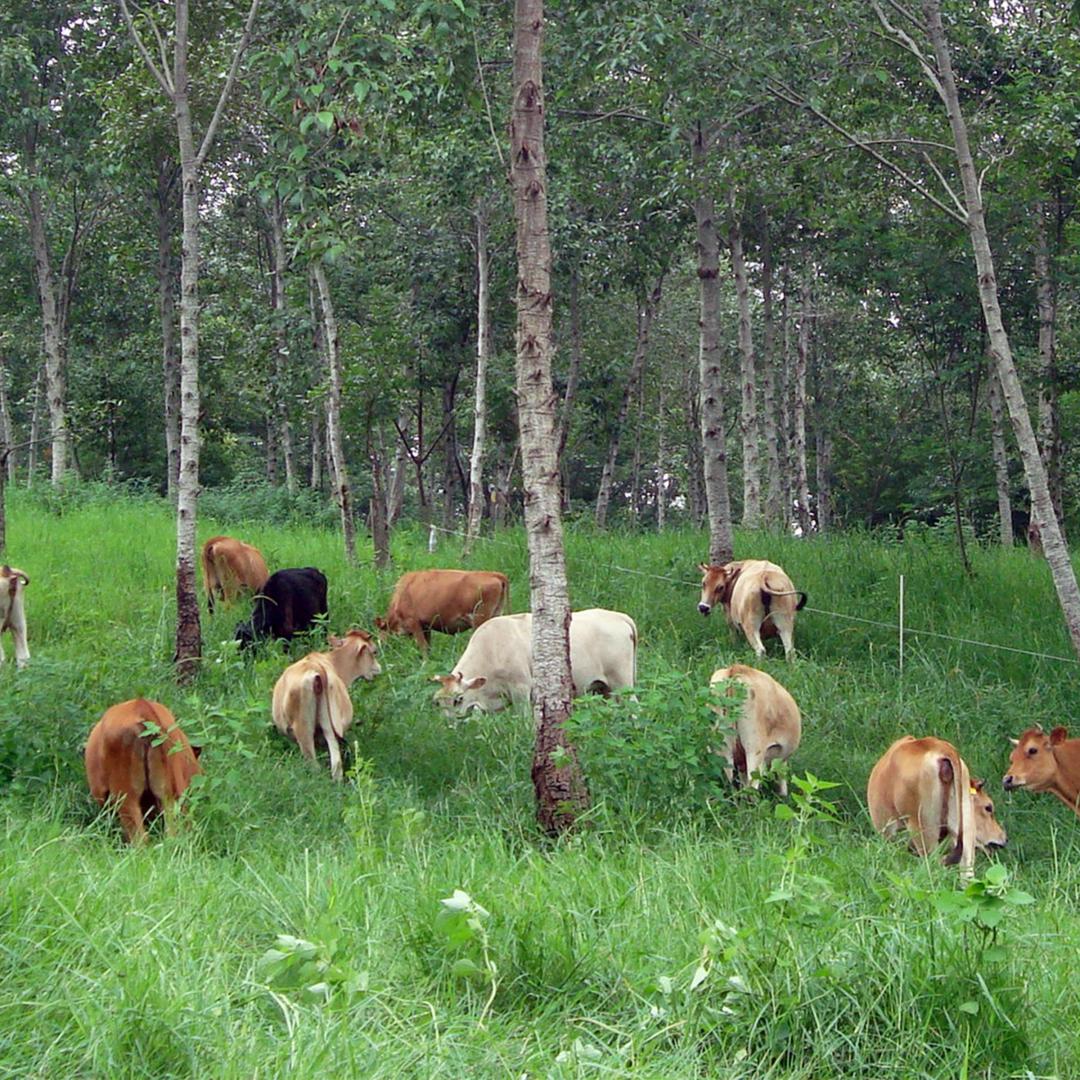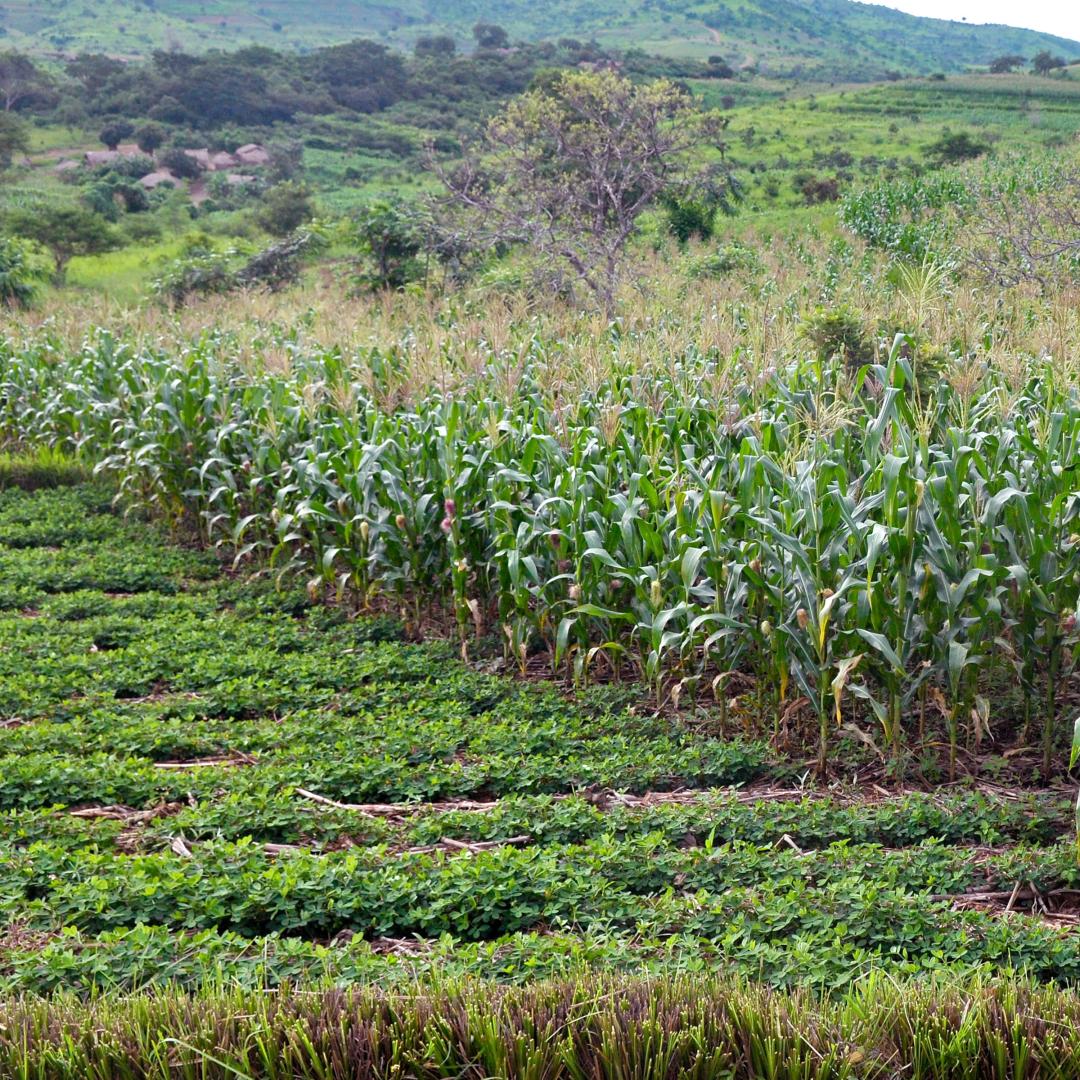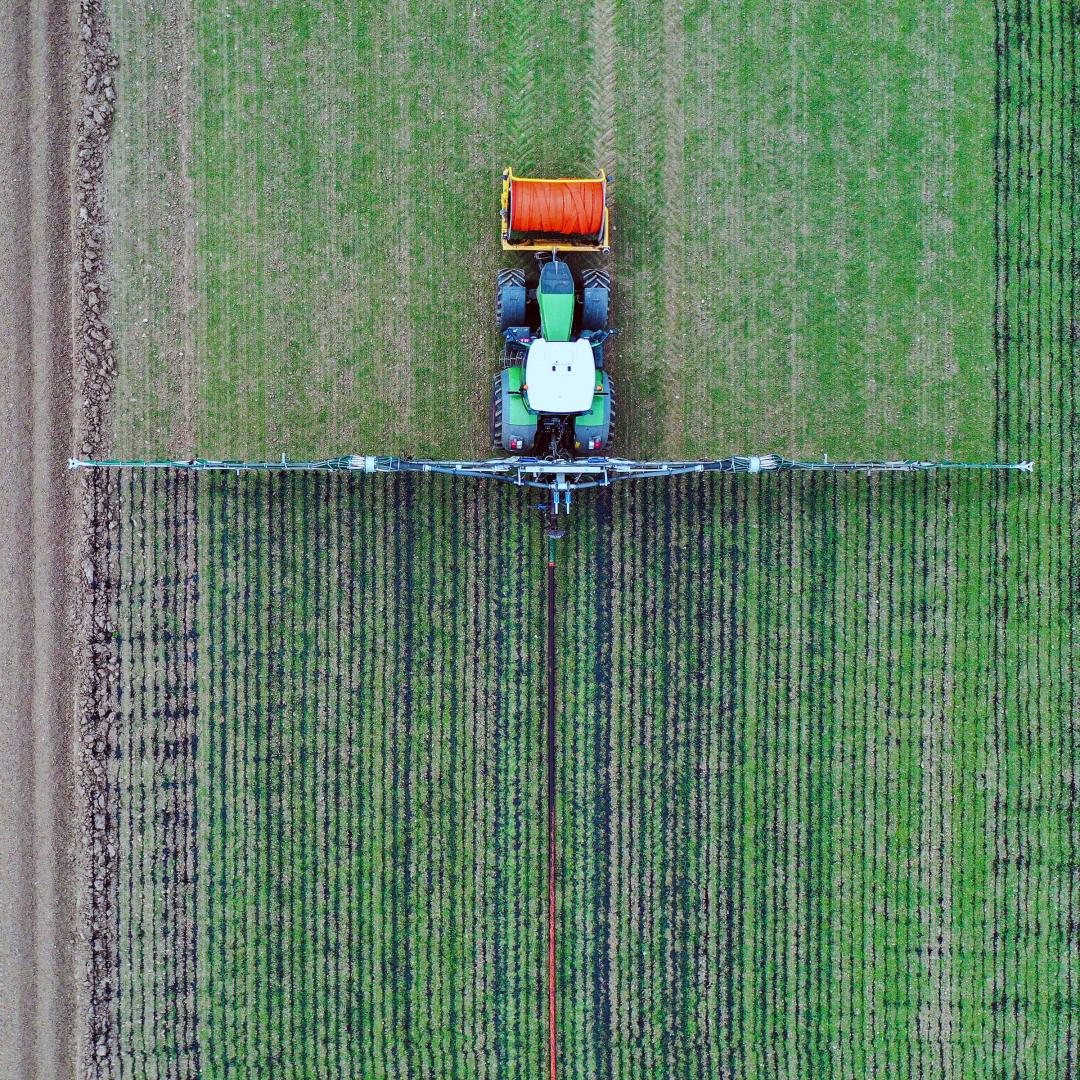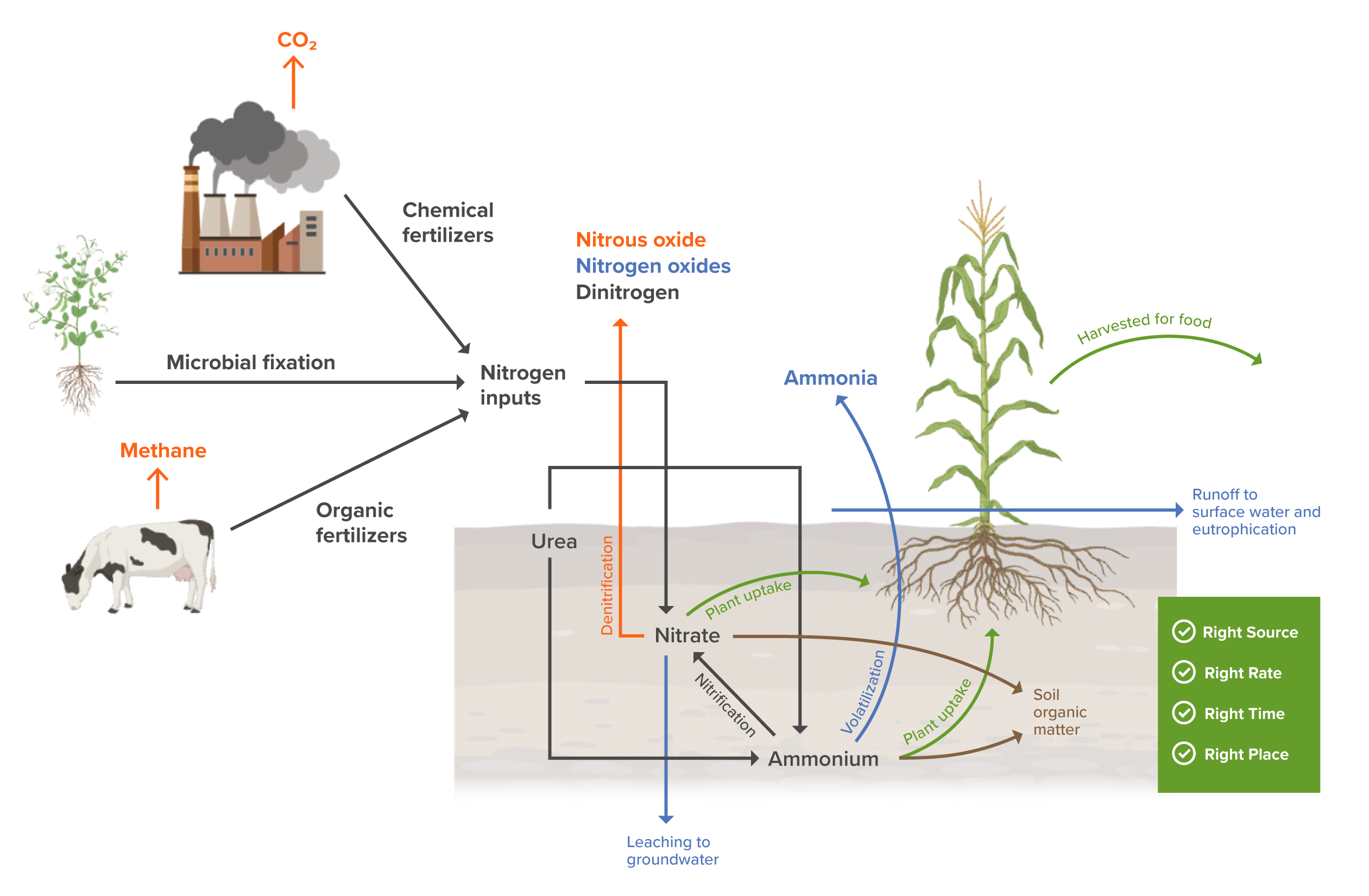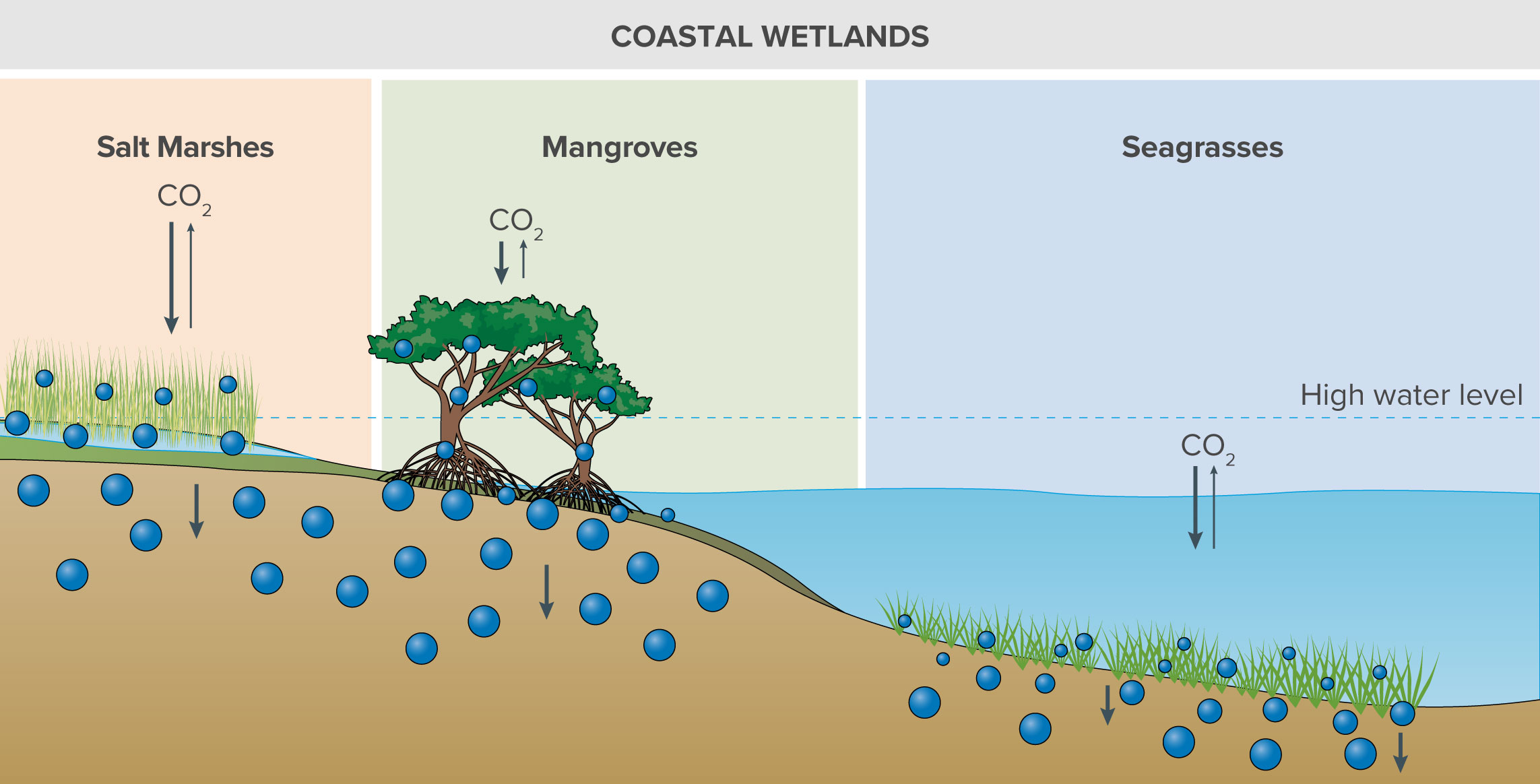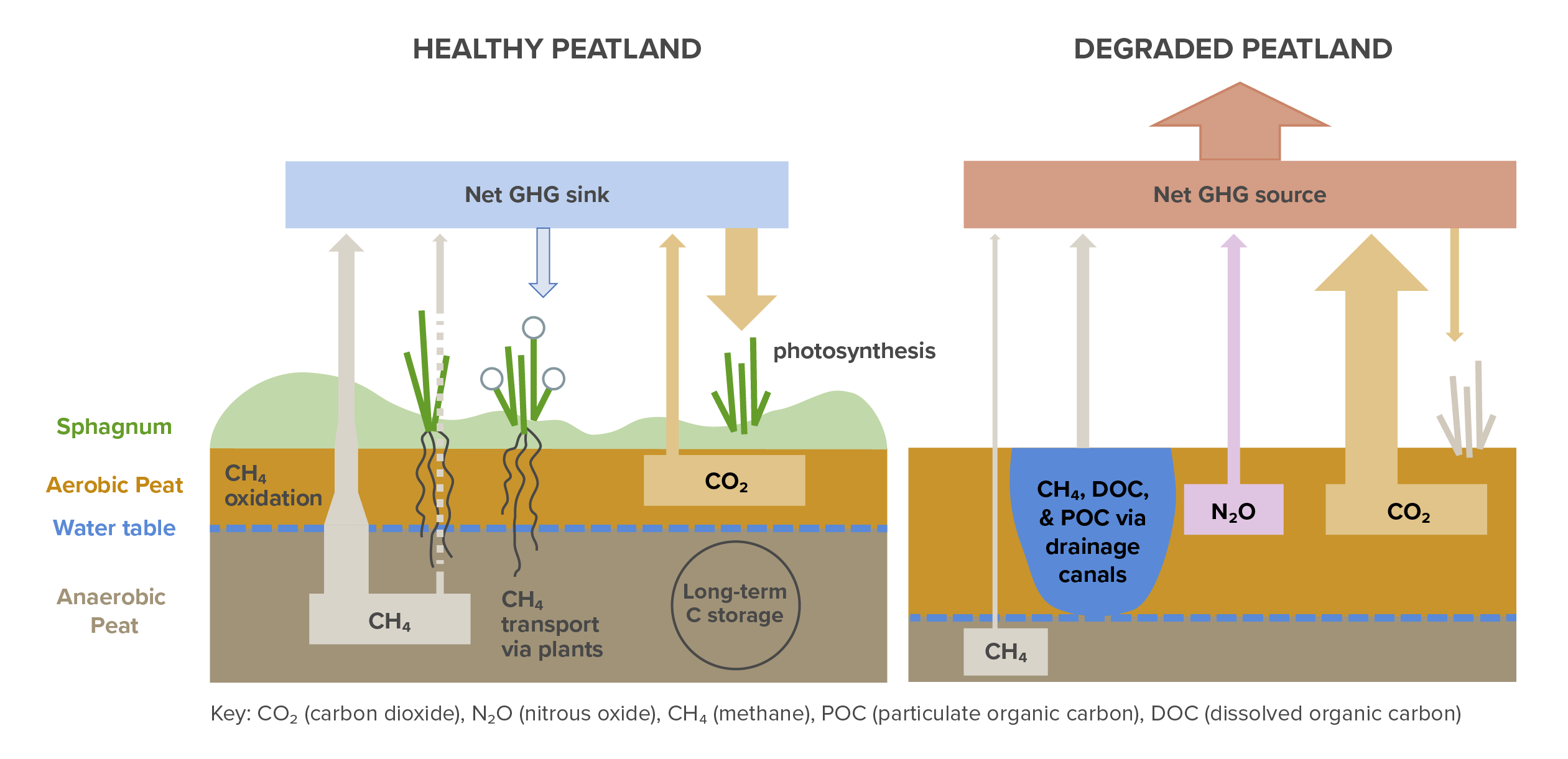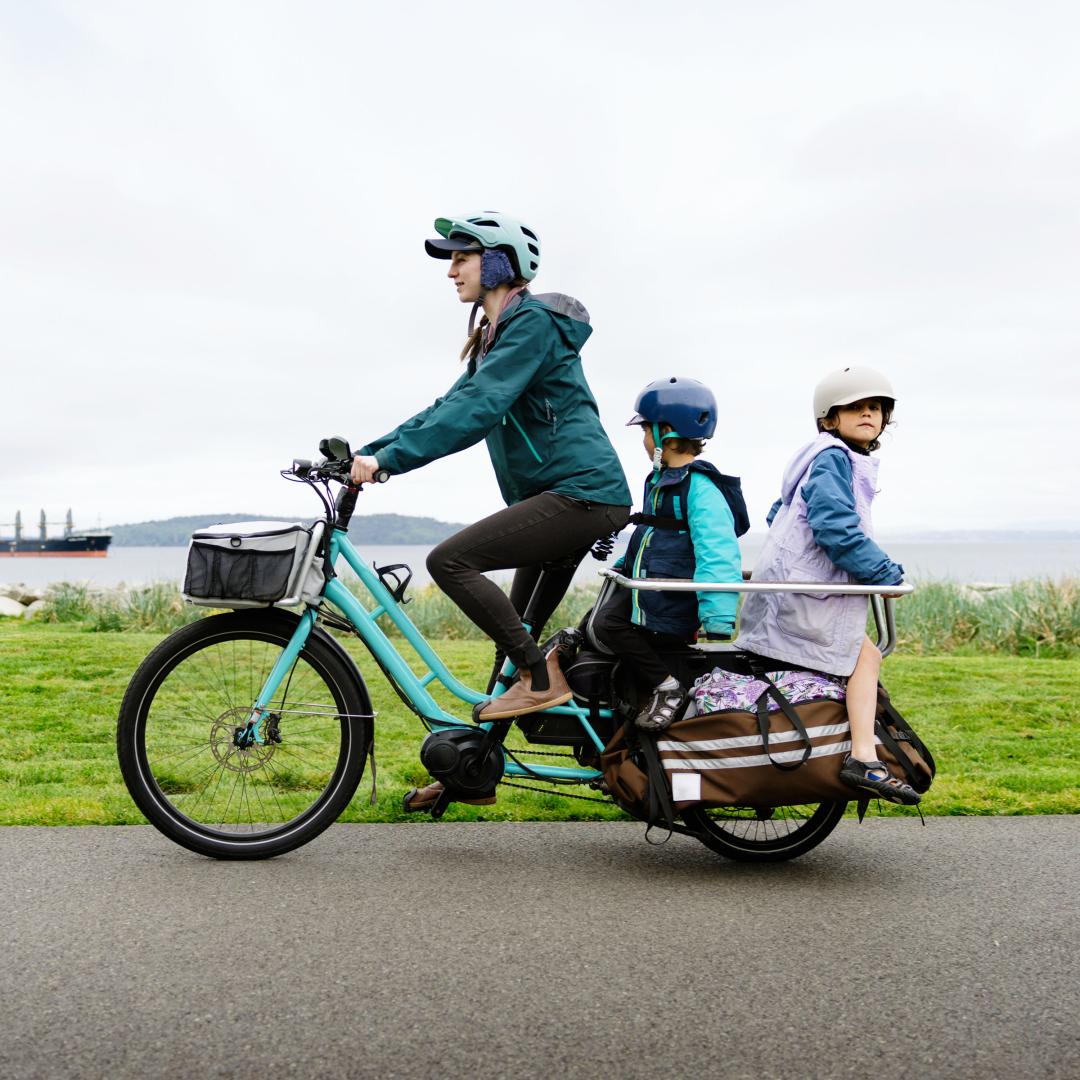Adams, V. M., Iacona, G. D., & Possingham, H. P. (2019). Weighing the benefits of expanding protected areas versus managing existing ones. Nature Sustainability, 2(5), 404–411. https://doi.org/10.1038/s41893-019-0275-5
Atkinson, C. L., & Alibašić, H. (2023). Prospects for Governance and Climate Change Resilience in Peatland Management in Indonesia. Sustainability, 15(3), Article 3. https://doi.org/10.3390/su15031839
Austin, K. G., Elsen, P. R., Coronado, E. N. H., DeGemmis, A., Gallego-Sala, A. V., Harris, L., Kretser, H. E., Melton, J. R., Murdiyarso, D., Sasmito, S. D., Swails, E., Wijaya, A., Winton, R. S., & Zarin, D. (2025). Mismatch between global importance of peatlands and the extent of their protection. Conservation Letters, 18(1), e13080. https://doi.org/10.1111/conl.13080
Barnes, M. D., Glew, L., Wyborn, C., & Craigie, I. D. (2018). Prevent perverse outcomes from global protected area policy. Nature Ecology & Evolution, 2(5), 759–762. https://doi.org/10.1038/s41559-018-0501-y
Bruner, A. G., Gullison, R. E., & Balmford, A. (2004). Financial costs and shortfalls of managing and expanding protected-area systems in developing countries. BioScience, 54(12), 1119–1126. https://doi.org/10.1641/0006-3568(2004)054[1119:FCASOM]2.0.CO;2
Conchedda, G., & Tubiello, F. N. (2020). Drainage of organic soils and GHG emissions: Validation with country data. Earth System Science Data, 12(4), 3113–3137. https://doi.org/10.5194/essd-12-3113-2020
Davidson, N. C. (2014). How much wetland has the world lost? Long-term and recent trends in global wetland area. Marine and Freshwater Research, 65(10), 934. https://doi.org/10.1071/MF14173
Deshmukh, C. S., Julius, D., Desai, A. R., Asyhari, A., Page, S. E., Nardi, N., Susanto, A. P., Nurholis, N., Hendrizal, M., Kurnianto, S., Suardiwerianto, Y., Salam, Y. W., Agus, F., Astiani, D., Sabiham, S., Gauci, V., & Evans, C. D. (2021). Conservation slows down emission increase from a tropical peatland in Indonesia. Nature Geoscience, 14(7), Article 7. https://doi.org/10.1038/s41561-021-00785-2
Dietrich, O., & Behrendt, A. (2022). Wet Grassland Sites with Shallow Groundwater Conditions: Effects on Local Meteorological Characteristics. Water, 14(21), Article 21. https://doi.org/10.3390/w14213560
Dinerstein, E., Joshi, A. R., Hahn, N. R., Lee, A. T. L., Vynne, C., Burkart, K., Asner, G. P., Beckham, C., Ceballos, G., Cuthbert, R., Dirzo, R., Fankem, O., Hertel, S., Li, B. V., Mellin, H., Pharand-Deschênes, F., Olson, D., Pandav, B., Peres, C. A., … Zolli, A. (2024). Conservation imperatives: Securing the last unprotected terrestrial sites harboring irreplaceable biodiversity. Frontiers in Science, 2. https://doi.org/10.3389/fsci.2024.1349350
Evers, S., Yule, C. M., Padfield, R., O’Reilly, P., & Varkkey, H. (2017). Keep wetlands wet: The myth of sustainable development of tropical peatlands – implications for policies and management. Global Change Biology, 23(2), 534–549. https://doi.org/10.1111/gcb.13422
Felipe Cadillo, M. M., & Bennett, A. (2024). Navigating socio-political threats to Amazonian peatland conservation: Insights from the Imiria Region, Peru. Sustainability, 16(16), Article 16. https://doi.org/10.3390/su16166967
Fluet-Chouinard, E., Stocker, B. D., Zhang, Z., Malhotra, A., Melton, J. R., Poulter, B., Kaplan, J. O., Goldewijk, K. K., Siebert, S., Minayeva, T., Hugelius, G., Joosten, H., Barthelmes, A., Prigent, C., Aires, F., Hoyt, A. M., Davidson, N., Finlayson, C. M., Lehner, B., … McIntyre, P. B. (2023). Extensive global wetland loss over the past three centuries. Nature, 614(7947), 281–286. https://doi.org/10.1038/s41586-022-05572-6
Fuller, C., Ondei, S., Brook, B. W., & Buettel, J. C. (2020). Protected-area planning in the Brazilian Amazon should prioritize additionality and permanence, not leakage mitigation. Biological Conservation, 248, 108673. https://doi.org/10.1016/j.biocon.2020.108673
Garnett, S. T., Burgess, N. D., Fa, J. E., Fernández-Llamazares, Á., Molnár, Z., Robinson, C. J., Watson, J. E. M., Zander, K. K., Austin, B., Brondizio, E. S., Collier, N. F., Duncan, T., Ellis, E., Geyle, H., Jackson, M. V., Jonas, H., Malmer, P., McGowan, B., Sivongxay, A., & Leiper, I. (2018). A spatial overview of the global importance of Indigenous lands for conservation. Nature Sustainability, 1(7), 369–374. https://doi.org/10.1038/s41893-018-0100-6
Girkin, N. T., & Davidson, S. J. (2024). Protect peatlands to achieve climate goals. Science, 383(6682), 490–490. https://doi.org/10.1126/science.adn4001
Girkin, N. T., Burgess, P. J., Cole, L., Cooper, H. V., Honorio Coronado, E., Davidson, S. J., Hannam, J., Harris, J., Holman, I., McCloskey, C. S., McKeown, M. M., Milner, A. M., Page, S., Smith, J., & Young, D. (2023). The three-peat challenge: Business as usual, responsible agriculture, and conservation and restoration as management trajectories in global peatlands. Carbon Management, 14(1), 2275578. https://doi.org/10.1080/17583004.2023.2275578
Goib, B. K., Fitriani, N., Wicaksono, S., & Chitra, J. (2018). Restoring peat, improving welfare, and empowering women: Can we have it all? https://wri-indonesia.org/en/insights/restoring-peat-improving-welfare-and-empowering-women-can-we-have-it-all
Goldstein, A., Turner, W. R., Spawn, S. A., Anderson-Teixeira, K. J., Cook-Patton, S., Fargione, J., Gibbs, H. K., Griscom, B., Hewson, J. H., Howard, J. F., Ledezma, J. C., Page, S., Koh, L. P., Rockström, J., Sanderman, J., & Hole, D. G. (2020). Protecting irrecoverable carbon in Earth’s ecosystems. Nature Climate Change, 10(4), 287–295. https://doi.org/10.1038/s41558-020-0738-8
Griscom, B. W., Adams, J., Ellis, P. W., Houghton, R. A., Lomax, G., Miteva, D. A., Schlesinger, W. H., Shoch, D., Siikamäki, J. V., Smith, P., Woodbury, P., Zganjar, C., Blackman, A., Campari, J., Conant, R. T., Delgado, C., Elias, P., Gopalakrishna, T., Hamsik, M. R., … Fargione, J. (2017). Natural climate solutions. Proceedings of the National Academy of Sciences, 114(44), 11645–11650. https://doi.org/10.1073/pnas.1710465114
Harris, L. I., Richardson, K., Bona, K. A., Davidson, S. J., Finkelstein, S. A., Garneau, M., McLaughlin, J., Nwaishi, F., Olefeldt, D., Packalen, M., Roulet, N. T., Southee, F. M., Strack, M., Webster, K. L., Wilkinson, S. L., & Ray, J. C. (2022). The essential carbon service provided by northern peatlands. Frontiers in Ecology and the Environment, 20(4), 222–230. https://doi.org/10.1002/fee.2437
Harrison, M. E., & Paoli, G. D. (2012). Managing the Risk of Biodiversity Leakage from Prioritising REDD+ in the Most Carbon-Rich Forests: The Case Study of Peat-Swamp Forests in Kalimantan, Indonesia. Tropical Conservation Science, 5(4), 426–433. https://doi.org/10.1177/194008291200500402
Hein, L., Spadaro, J. V., Ostro, B., Hammer, M., Sumarga, E., Salmayenti, R., Boer, R., Tata, H., Atmoko, D., & Castañeda, J.-P. (2022). The health impacts of Indonesian peatland fires. Environmental Health, 21(1), 62. https://doi.org/10.1186/s12940-022-00872-w
Helbig, M., Waddington, J. M., Alekseychik, P., Amiro, B., Aurela, M., Barr, A. G., Black, T. A., Carey, S. K., Chen, J., Chi, J., Desai, A. R., Dunn, A., Euskirchen, E. S., Flanagan, L. B., Friborg, T., Garneau, M., Grelle, A., Harder, S., Heliasz, M., … Schulze, C. (2020). The biophysical climate mitigation potential of boreal peatlands during the growing season. Environmental Research Letters, 15(10), 104004. https://doi.org/10.1088/1748-9326/abab34
Hugelius, G., Loisel, J., Chadburn, S., Jackson, R. B., Jones, M., MacDonald, G., Marushchak, M., Olefeldt, D., Packalen, M., Siewert, M. B., Treat, C., Turetsky, M., Voigt, C., & Yu, Z. (2020). Large stocks of peatland carbon and nitrogen are vulnerable to permafrost thaw. Proceedings of the National Academy of Sciences, 117(34), 20438–20446. https://doi.org/10.1073/pnas.1916387117
Humpenöder, F., Karstens, K., Lotze-Campen, H., Leifeld, J., Menichetti, L., Barthelmes, A., & Popp, A. (2020). Peatland protection and restoration are key for climate change mitigation. Environmental Research Letters, 15(10), 104093. https://doi.org/10.1088/1748-9326/abae2a
IPCC 2014, 2013 Supplement to the 2006 IPCC Guidelines for National Greenhouse Gas Inventories: Wetlands, Hiraishi, T., Krug, T., Tanabe, K., Srivastava, N., Baasansuren, J., Fukuda, M. and Troxler, T.G. (eds). Published: IPCC, Switzerland.
IUCN. Peatlands and Climate Change (IUCN Issues Briefs). (2021). Link to source: https://iucn.org/sites/default/files/2022-04/iucn_issues_brief_peatlands_and_climate_change_final_nov21.pdf
Jalilov, S.-M., Rochmayanto, Y., Hidayat, D. C., Raharjo, J. T., Mendham, D., & Langston, J. D. (2025). Unveiling economic dimensions of peatland restoration in Indonesia: A systematic literature review. Ecosystem Services, 71, 101693. https://doi.org/10.1016/j.ecoser.2024.101693
Jones, M. C., Harden, J., O’Donnell, J., Manies, K., Jorgenson, T., Treat, C., & Ewing, S. (2017). Rapid carbon loss and slow recovery following permafrost thaw in boreal peatlands. Global Change Biology, 23(3), 1109–1127. https://doi.org/10.1111/gcb.13403
Kiely, L., Spracklen, D. V., Arnold, S. R., Papargyropoulou, E., Conibear, L., Wiedinmyer, C., Knote, C., & Adrianto, H. A. (2021). Assessing costs of Indonesian fires and the benefits of restoring peatland. Nature Communications, 12(1), 7044. https://doi.org/10.1038/s41467-021-27353-x
Konecny, K., Ballhorn, U., Navratil, P., Jubanski, J., Page, S. E., Tansey, K., Hooijer, A., Vernimmen, R., & Siegert, F. (2016). Variable carbon losses from recurrent fires in drained tropical peatlands. Global Change Biology, 22(4), 1469–1480. https://doi.org/10.1111/gcb.13186
Leifeld, J., & Menichetti, L. (2018). The underappreciated potential of peatlands in global climate change mitigation strategies. Nature Communications, 9(1), 1071. https://doi.org/10.1038/s41467-018-03406-6
Leifeld, J., Wüst-Galley, C., & Page, S. (2019). Intact and managed peatland soils as a source and sink of GHGs from 1850 to 2100. Nature Climate Change, 9(12), 945–947. https://doi.org/10.1038/s41558-019-0615-5
Li, B. V., Wu, S., Pimm, S. L., & Cui, J. (2024a). The synergy between protected area effectiveness and economic growth. Current Biology, 34(13), 2907-2920.e5. https://doi.org/10.1016/j.cub.2024.05.044
Li, G., Fang, C., Watson, J. E. M., Sun, S., Qi, W., Wang, Z., & Liu, J. (2024b). Mixed effectiveness of global protected areas in resisting habitat loss. Nature Communications, 15(1), 8389. https://doi.org/10.1038/s41467-024-52693-9
Loisel, J., Gallego-Sala, A. V., Amesbury, M. J., Magnan, G., Anshari, G., Beilman, D. W., Benavides, J. C., Blewett, J., Camill, P., Charman, D. J., Chawchai, S., Hedgpeth, A., Kleinen, T., Korhola, A., Large, D., Mansilla, C. A., Müller, J., van Bellen, S., West, J. B., … Wu, J. (2021). Expert assessment of future vulnerability of the global peatland carbon sink. Nature Climate Change, 11(1), 70–77. https://doi.org/10.1038/s41558-020-00944-0
Marlier, M. E., Liu, T., Yu, K., Buonocore, J. J., Koplitz, S. N., DeFries, R. S., Mickley, L. J., Jacob, D. J., Schwartz, J., Wardhana, B. S., & Myers, S. S. (2019). Fires, smoke exposure, and public health: An integrative framework to maximize health benefits from peatland restoration. GeoHealth, 3(7), 178–189. https://doi.org/10.1029/2019GH000191
Melton, J. R., Chan, E., Millard, K., Fortier, M., Winton, R. S., Martín-López, J. M., Cadillo-Quiroz, H., Kidd, D., & Verchot, L. V. (2022). A map of global peatland extent created using machine learning (Peat-ML). Geoscientific Model Development, 15(12), 4709–4738. https://doi.org/10.5194/gmd-15-4709-2022
Miettinen, J., Shi, C., & Liew, S. C. (2011). Deforestation rates in insular Southeast Asia between 2000 and 2010. Global Change Biology, 17(7), 2261–2270. https://doi.org/10.1111/j.1365-2486.2011.02398.x
Miettinen, J., Shi, C., & Liew, S. C. (2016). Land cover distribution in the peatlands of Peninsular Malaysia, Sumatra and Borneo in 2015 with changes since 1990. Global Ecology and Conservation, 6, 67–78. https://doi.org/10.1016/j.gecco.2016.02.004
Minasny, B., Adetsu, D. V., Aitkenhead, M., Artz, R. R. E., Baggaley, N., Barthelmes, A., Beucher, A., Caron, J., Conchedda, G., Connolly, J., Deragon, R., Evans, C., Fadnes, K., Fiantis, D., Gagkas, Z., Gilet, L., Gimona, A., Glatzel, S., Greve, M. H., … Zak, D. (2024). Mapping and monitoring peatland conditions from global to field scale. Biogeochemistry, 167(4), 383–425. https://doi.org/10.1007/s10533-023-01084-1
Minayeva, T. Yu., Bragg, O. M., & Sirin, A. A. (2017). Towards ecosystem-based restoration of peatland biodiversity. Mires and Peat, 19, 1–36. https://doi.org/10.19189/MaP.2013.OMB.150
Müller, J., & Joos, F. (2021). Committed and projected future changes in global peatlands – continued transient model simulations since the Last Glacial Maximum. Biogeosciences, 18(12), 3657–3687. https://doi.org/10.5194/bg-18-3657-2021
Nelson, K., Thompson, D., Hopkinson, C., Petrone, R., & Chasmer, L. (2021). Peatland-fire interactions: A review of wildland fire feedbacks and interactions in Canadian boreal peatlands. Science of The Total Environment, 769, 145212. https://doi.org/10.1016/j.scitotenv.2021.145212
Noon, M. L., Goldstein, A., Ledezma, J. C., Roehrdanz, P. R., Cook-Patton, S. C., Spawn-Lee, S. A., Wright, T. M., Gonzalez-Roglich, M., Hole, D. G., Rockström, J., & Turner, W. R. (2022). Mapping the irrecoverable carbon in Earth’s ecosystems. Nature Sustainability, 5(1), 37–46. https://doi.org/10.1038/s41893-021-00803-6
Pan, Y., Birdsey, R. A., Phillips, O. L., Houghton, R. A., Fang, J., Kauppi, P. E., Keith, H., Kurz, W. A., Ito, A., Lewis, S. L., Nabuurs, G.-J., Shvidenko, A., Hashimoto, S., Lerink, B., Schepaschenko, D., Castanho, A., & Murdiyarso, D. (2024). The enduring world forest carbon sink. Nature, 631(8021), 563–569. https://doi.org/10.1038/s41586-024-07602-x
Peacock, M., Audet, J., Bastviken, D., Futter, M. N., Gauci, V., Grinham, A., Harrison, J. A., Kent, M. S., Kosten, S., Lovelock, C. E., Veraart, A. J., & Evans, C. D. (2021). Global importance of methane emissions from drainage ditches and canals. Environmental Research Letters, 16(4), 044010. https://doi.org/10.1088/1748-9326/abeb36
Posa, M. R. C., Wijedasa, L. S., & Corlett, R. T. (2011). Biodiversity and conservation of tropical peat swamp forests. BioScience, 61(1), 49–57. https://doi.org/10.1525/bio.2011.61.1.10
Ritson, J. P., Bell, M., Brazier, R. E., Grand-Clement, E., Graham, N. J. D., Freeman, C., Smith, D., Templeton, M. R., & Clark, J. M. (2016). Managing peatland vegetation for drinking water treatment. Scientific Reports, 6(1), 36751. https://doi.org/10.1038/srep36751
Sasmito, S. D., Taillardat, P., Adinugroho, W. C., Krisnawati, H., Novita, N., Fatoyinbo, L., Friess, D. A., Page, S. E., Lovelock, C. E., Murdiyarso, D., Taylor, D., & Lupascu, M. (2025). Half of land use carbon emissions in Southeast Asia can be mitigated through peat swamp forest and mangrove conservation and restoration. Nature Communications, 16(1), 740. https://doi.org/10.1038/s41467-025-55892-0
Schulz, C., Martín Brañas, M., Núñez Pérez, C., Del Aguila Villacorta, M., Laurie, N., Lawson, I. T., & Roucoux, K. H. (2019). Uses, cultural significance, and management of peatlands in the Peruvian Amazon: Implications for conservation. Biological Conservation, 235, 189–198. https://doi.org/10.1016/j.biocon.2019.04.005
Spitzer, K., & Danks, H. V. (2006). Insect biodiversity of boreal peat bogs. Annual Review of Entomology, 51, 137–161. https://doi.org/10.1146/annurev.ento.51.110104.151036
Strack, M., Davidson, S. J., Hirano, T., & Dunn, C. (2022). The potential of peatlands as nature-based climate solutions. Current Climate Change Reports, 8(3), 71–82. https://doi.org/10.1007/s40641-022-00183-9
Suwarno, A., Hein, L., & Sumarga, E. (2016). Who benefits from ecosystem services? A case study for central Kalimantan, Indonesia. Environmental Management, 57(2), 331–344. https://doi.org/10.1007/s00267-015-0623-9
Syahza, A., Suswondo, Bakce, D., Nasrul, B., Irianti, W., & Irianti, M. (2020). Peatland policy and management strategy to support sustainable development in Indonesia. Journal of Physics: Conference Series, 1655, 012151. Link to source: https://doi.org/10.1088/1742-6596/1655/1/012151
Sze, J. S., Carrasco, L. R., Childs, D., & Edwards, D. P. (2021). Reduced deforestation and degradation in Indigenous Lands pan-tropically. Nature Sustainability, 5(2), 123–130. https://doi.org/10.1038/s41893-021-00815-2
Tan, Z. D., Lupascu, M., & Wijedasa, L. S. (2021). Paludiculture as a sustainable land use alternative for tropical peatlands: A review. Science of The Total Environment, 753, 142111. https://doi.org/10.1016/j.scitotenv.2020.142111
Thorburn, C. C., & Kull, C. A. (2015). Peatlands and plantations in Sumatra, Indonesia: Complex realities for resource governance, rural development and climate change mitigation. Asia Pacific Viewpoint, 56(1), 153–168. https://doi.org/10.1111/apv.12045
Thornton, S. A., Setiana, E., Yoyo, K., Dudin, Yulintine, Harrison, M. E., Page, S. E., & Upton, C. (2020). Towards biocultural approaches to peatland conservation: The case for fish and livelihoods in Indonesia. Environmental Science & Policy, 114, 341–351. https://doi.org/10.1016/j.envsci.2020.08.018
Turetsky, M. R., Benscoter, B., Page, S., Rein, G., van der Werf, G. R., & Watts, A. (2015). Global vulnerability of peatlands to fire and carbon loss. Nature Geoscience, 8(1), 11–14. https://doi.org/10.1038/ngeo2325
Uda, S. K., Hein, L., & Sumarga, E. (2017). Towards sustainable management of Indonesian tropical peatlands. Wetlands Ecology and Management, 25(6), 683–701. https://doi.org/10.1007/s11273-017-9544-0
Uda, S. K., Hein, L., & Atmoko, D. (2019). Assessing the health impacts of peatland fires: A case study for Central Kalimantan, Indonesia. Environmental Science and Pollution Research, 26(30), 31315–31327. https://doi.org/10.1007/s11356-019-06264-x
UNEP (2022). Global Peatlands Assessment – The State of the World’s Peatlands: Evidence for action toward the conservation, restoration, and sustainable management of peatlands. Main Report. Global Peatlands Initiative. United Nations Environment Programme, Nairobi.
UNEP-WCMC and IUCN. (2024). Protected Planet Report. UNEP-WCMC and IUCN. https://digitalreport.protectedplanet.net
Waldron, A., Adams, V., Allan, J., Arnell, A., Asner, G., Atkinson, S., Baccini, A., Baillie, J., Balmford, A., & Austin Beau, J. (2020). Protecting 30% of the planet for nature: Costs, benefits and economic implications. https://pure.iiasa.ac.at/id/eprint/16560/1/Waldron_Report_FINAL_sml.pdf
Williams, M., Reay, D., & Smith, P. (2023). Avoiding emissions versus creating sinks—Effectiveness and attractiveness to climate finance. Global Change Biology, 29(8), 2046–2049. https://doi.org/10.1111/gcb.16598
Wolf, C., Levi, T., Ripple, W. J., Zárrate-Charry, D. A., & Betts, M. G. (2021). A forest loss report card for the world’s protected areas. Nature Ecology & Evolution, 5(4), 520–529. https://doi.org/10.1038/s41559-021-01389-0
Worrall, F., Howden, N. J. K., Burt, T. P., Rico-Ramirez, M. A., & Kohler, T. (2022). Local climate impacts from ongoing restoration of a peatland. Hydrological Processes, 36(3), e14496. https://doi.org/10.1002/hyp.14496
Xu, J., Morris, P. J., Liu, J., & Holden, J. (2018a). Hotspots of peatland-derived potable water use identified by global analysis. Nature Sustainability, 1(5), 246–253. https://doi.org/10.1038/s41893-018-0064-6
Xu, J., Morris, P. J., Liu, J., & Holden, J. (2018b). PEATMAP: Refining estimates of global peatland distribution based on a meta-analysis. CATENA, 160, 134–140. https://doi.org/10.1016/j.catena.2017.09.010
Yu, Z., Loisel, J., Brosseau, D. P., Beilman, D. W., & Hunt, S. J. (2010). Global peatland dynamics since the Last Glacial Maximum. Geophysical Research Letters, 37(13). https://doi.org/10.1029/2010GL043584

